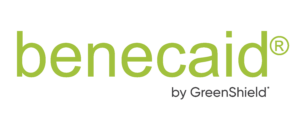Advisors should be wary of using EP3 pooling as a key factor to recommend fully insured vs. budgeted Administrative Services Only (ASO) plans. Let’s take a deep dive into how the EP3 pooling works and its potential limitations so that you can make an informed recommendation.
What is EP3?
In 2012, Canadian insurance companies decided to create the Extended Healthcare Policy Protection Plan (EP3) as a way of protecting themselves against very high drug claims, specifically biologics and speciality drugs. Eligibility for EP3 is updated each year and the 2015 requirement was a household threshold of $60,000 per drug for 2 consecutive years.
Limitations to the EP3 pooling arrangement:
New specialty drugs are better and more efficient
One of the main reasons that new specialty drugs such as Sovaldi, Holkra Pak and Harvoni have received so much attention is that although they are high cost, they are also much more effective and have greatly reduced treatment times. Harvoni, which is used to treat Hepatitis C, has a cure rate of over 90% and a treatment cycle of only 12-24 weeks. This means that patients taking this medication are unlikely to meet the threshold of $60,000 for 2 consecutive years; this trend will continue as the demand for more efficient drugs increases.
Many common prescription drugs do not meet the criteria
There are a number of commonly used prescription drugs that are priced just below the qualifying threshold for the EP3 pooling. Below is a list of top drugs and their approximate annual cost per patient per year to illustrate that none of them are EP3 eligible.
Remicade – Inflammatory Conditions (Arthritis/Crohns Disease) – $25,000-$55,000
Humira – Inflammatory Conditions (Arthritis/Crohns Disease) – $20,000
Enbrel – Inflammatory Conditions (Arthritis/Plaque Psoriasis) – $21,000
Sovaldi – Hepatitis C – $58,000 (treatment <1 year)
Stelara – Inflammatory Conditions (Plaque Psoriasis) – $21,000
Avonex/Rebif – Multiple Sclerosis (Nervous system) – $26,000
Neulasta – Blood Disorders (Reduce infection during strong chemotherapy) – $12,000
Lucentis – Eye Disease, Macular Degeneration – $20,000
Copaxone – Multiple Sclerosis – $17,000
Overall, the decision to pick a budgeted ASO or a fully insured model should be less related to the perceived benefit of the EP3 pooling as there are several limitations that may apply.
To learn more about the EP3 or one of our group health benefits solutions, please contact your Executive Benefits Consultants or email us at advisors@benecaid.com.



Comments are closed.